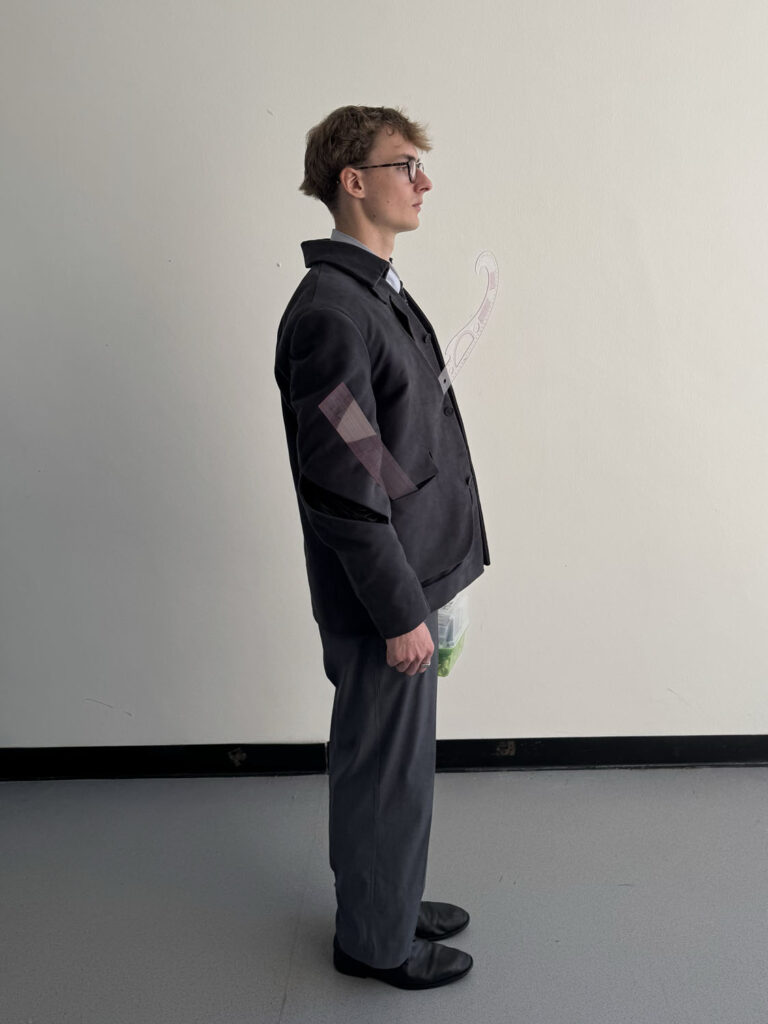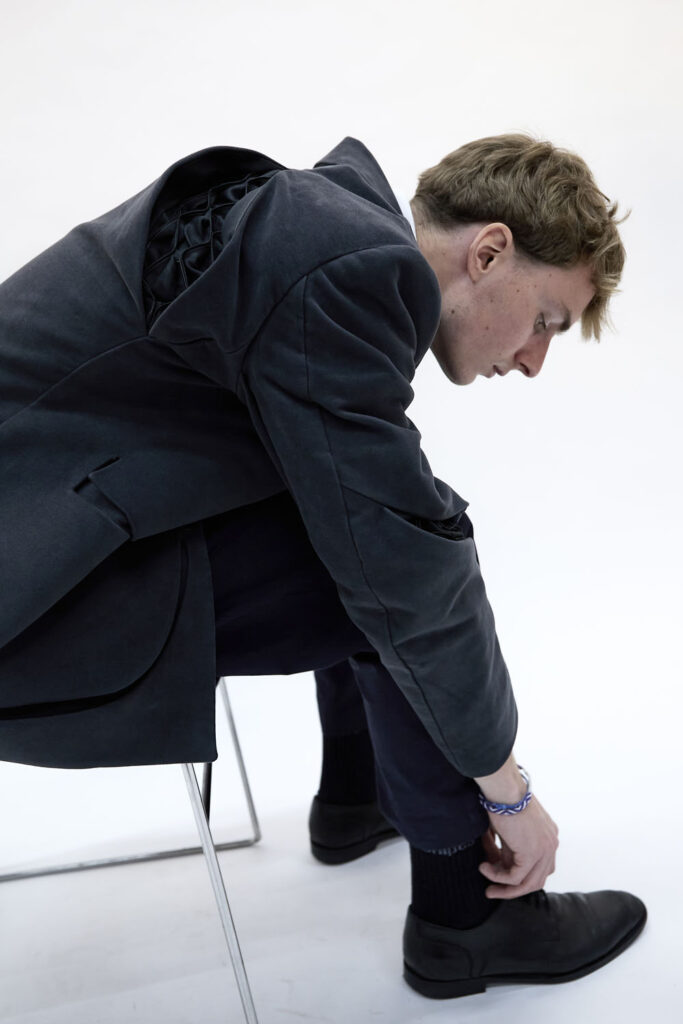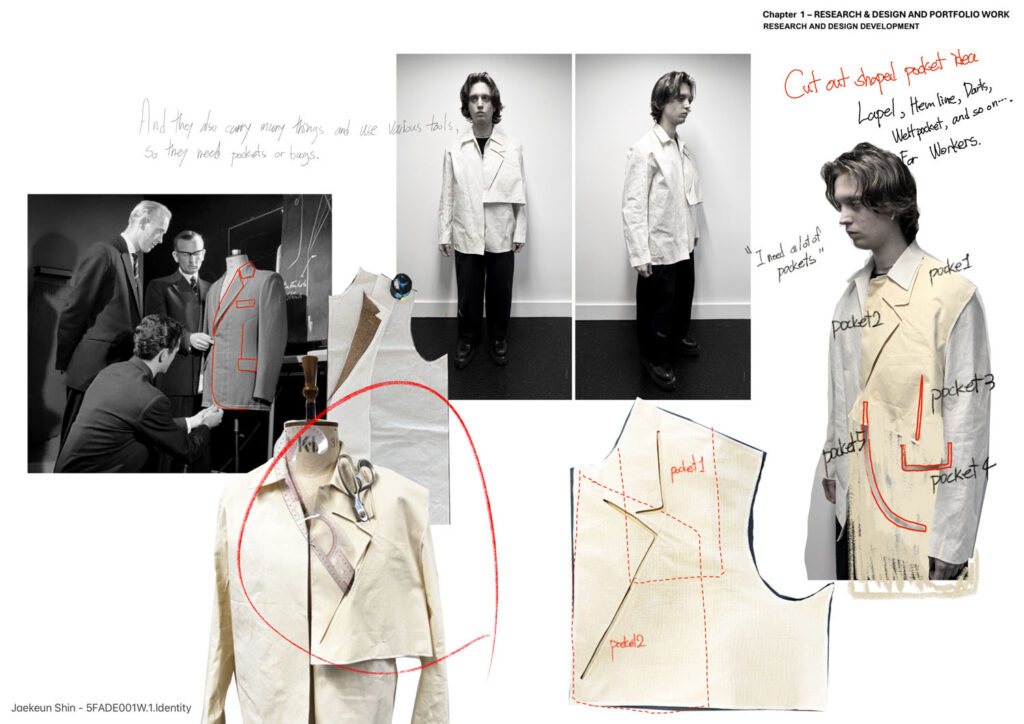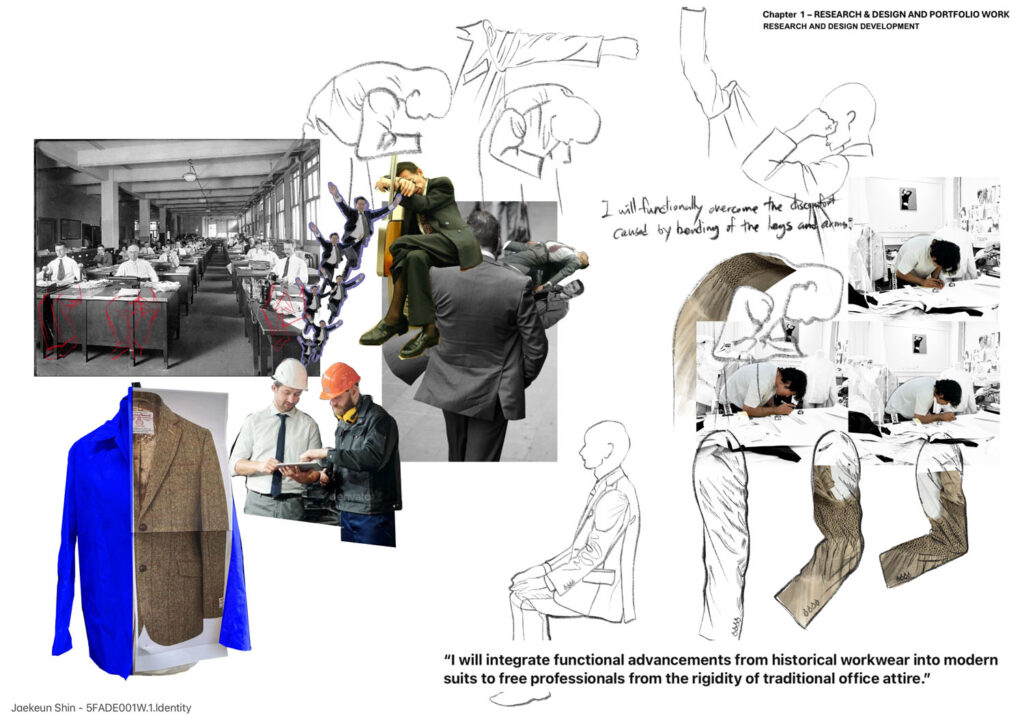When Jaekeun Shin talks about his collection, he’s not just discussing garments, he’s revisiting his past. Long before he set foot in a fashion studio, his hands were busy in his father’s factory, helping out during school breaks, carrying screws in his pockets, crouching beside machines. That factory, once a modest 10-pyeong space, has since grown into a large-scale operation, an emblem of his father’s perseverance. And while many might have seen that as a ready-made future, Shin chose a different path.
“I started working at my father’s factory when I was young,” he reflects. “At one point, I naturally assumed I would become an engineer.” But after completing his military service in 2018, something shifted. “I realized that my path wasn’t something I had truly achieved on my own. I began to question what I could genuinely accomplish and enjoy.”
That question led him to fashion.
Now a student at the University of Westminster, Shin is crafting a new identity, one that doesn’t reject his past, but builds upon it. His collection is a direct reflection of that layered journey. Rooted in the rugged functionality of workwear and elevated by the refinement of tailoring, each piece is imbued with personal meaning.


“The factory was a major part of my childhood and now feels like a turning point in my life, almost like a second home,” he says. “That connection allowed me to immerse myself deeply in this collection.” His garments draw from the movements and needs of physical laborers, bending, crouching, carrying tools, and translate them into pieces meant for today’s professionals. One standout jacket blends the silhouette of a suit with nine hidden pockets, all subtly embedded through precise cut-out techniques.
“For me, workwear is not just a theme; it represents my identity, my past, and the sum of my experiences.”

Shin’s design process was informed by deep personal insight and technical experimentation. He merged traditional workwear patterns with the structure of a blazer, aiming for both familiarity and innovation. “Since I wanted a regular fit, I added action pleats to improve comfort and movement. In the process, I developed pleat details inspired by British vintage smocks,” he explains.
Fabric choice was equally intentional. He selected moleskin from Brisbane Moss, a material historically associated with labor garments. “I chose it not only for its premium quality but also because of its eco-friendly certification (Standard 100 by OEKO-TEX),” Shin adds, pointing to his commitment to sustainability as well as heritage.
While the collection began with personal roots, Shin was careful not to make it too introspective. “I focused on removing as much as possible, keeping only what was truly necessary,” he says. “If the concept becomes too strong, it risks looking more like a costume than real clothing, which I wanted to avoid.” His approach emphasizes construction, fabric, and balance, ensuring the result is both wearable and deeply resonant.
His time at Westminster played a vital role in this evolution. Through access to the Menswear Archive, he physically studied vintage garments, gaining a hands-on understanding of construction and detail. Beyond that, he credits the school’s open environment and engaged faculty for pushing his thinking forward. “Rather than focusing solely on theory, the curriculum centered around intensive projects and digital tools like CLO 3D. It helped me significantly expand my practical and creative abilities.”
Still, he hasn’t let go of his roots in Korea. During academic breaks, he returns home to assist in studios or collaborate with mentors, ensuring his growth remains grounded in real-world experience.

All of this culminates in Jaerootage, the label Shin hopes will carry his philosophy into the wardrobes of others. “I hope that when people wear Jaerootage, they not only appreciate the richness of the fabrics but also enjoy discovering the playful and thoughtful elements embedded within each piece,” he says. His ideal customers? Men in their 30s who mix vintage with contemporary, those whose closets hold pieces from Kapital, Dries Van Noten, Issey Miyake, and The Real McCoy’s.
More than anything, Shin wants to continue building, just like his father did, but in his own way. “Through this collection, I was finally able to have a deep conversation with myself about what I truly want to create, what I enjoy doing, and the kind of design direction I want to pursue in the future.”
From the clang of machines to the quiet of the studio, Shin’s story is one of reflection, reinvention, and resolve. Through his clothes, he’s telling a story that’s deeply personal, yet strikingly universal. Because in the end, we are all workers of some kind, stitching our past into the fabric of what comes next.



